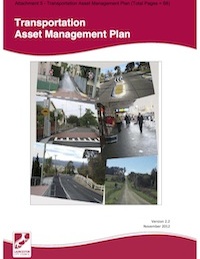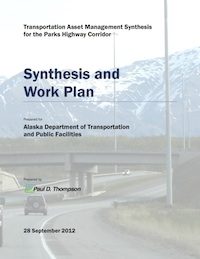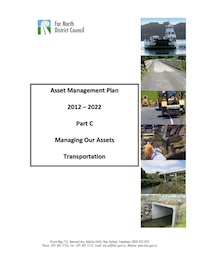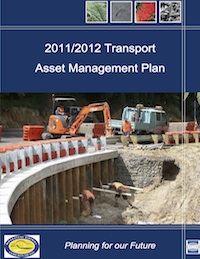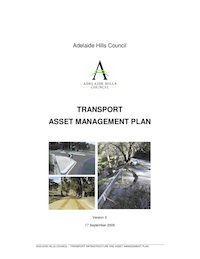Plan Characteristics Future cost/performance projections are based on management system analysis (e.g. HERS, dTIMS)
The Launceston City Council – Road Asset Management Plan is available here.
This document meets the following additional criteria: • Asset valuation included • Defines linkages to other planning & programming documents • Future cost/performance projections are based on management system analysis (e.g. HERS, dTIMS) • Includes an assessment of data quality or reliability • Includes analysis of future demand impacts on asset needs • Includes cost projections for meeting performance or LOS targets • Includes estimates of future maintenance costs • Includes estimates of future rehabilitation, replacement, reconstruction, and/or renewal costs • Includes formal risk assessment results such as a risk register • Includes substantive list of process, data, and/or systems improvement actions • Key revenue projection assumptions identified • Performance/LOS targets are linked to agency goals/objectives.
The modal scope of this document is: Highway Only.
The asset scope of this document is: Highway Assets, Includes other highway assets.
External link:
The Lauceston Council Transportation Asset Management Plan follows the same outline as other council TAMPs in Australia. The TAMP focuses on levels of service, based on consumer expectations and strategic goals, future demand, lifecycle management, a financial summary, and a plan improvement program. The document includes a “Road Map” for preparing a TAMP. Current levels of service are also described using key performance measures, then compared to an optimal level of service as established by the agency. Risks, including treatment plans, are also addressed.
The Alaska DOT&PF – Transportation Asset Management Synthesis for the Parks Highway Corridor is available here.
This document meets the following additional criteria: • Asset valuation included • Future cost/performance projections are based on management system analysis (e.g. HERS, dTIMS) • Includes an assessment of data quality or reliability • Includes cross-asset resource allocation method • Includes customer-oriented LOS statements • Presents a corridor view of asset management.
The modal scope of this document is: Highway Only.
The asset scope of this document is: Highway Assets, Includes other highway assets.
External link: http://www.dot.state.ak.us/stwddes/asset_mgmt/assets/enterprise_tam_workplan_final.pdf
Alaska DOT & PF seeks to develop their agency's asset management maturity in order to improve the life cycle management and performance of their resources. The TAMP addresses a desire to more effectively use rich collections of data, fill gaps in data and understanding of performance, and change organizational procedures and culture. This TAMP outlines a work plan for the timeframe of 2012-2014, composed of self-contained projects for the advancement of the agency's current practice.
The Far North District Council – Asset Management Plan 2012-2022 is available here.
This document meets the following additional criteria: • Asset valuation included • Future cost/performance projections are based on management system analysis (e.g. HERS, dTIMS) • Includes an assessment of data quality or reliability • Includes analysis of future demand impacts on asset needs • Includes cost projections for meeting performance or LOS targets • Includes customer-oriented LOS statements • Includes estimates of future maintenance costs • Includes estimates of future rehabilitation, replacement, reconstruction, and/or renewal costs • Includes formal risk assessment results such as a risk register • Includes future projected asset condition • Includes substantive list of process, data, and/or systems improvement actions • Investment strategies summarize planned capital and operating expenditures • Key revenue projection assumptions identified • Performance/LOS targets are linked to agency goals/objectives • References customer surveys/outreach for establishing LOS statements • Risk assessment results incorporated into investment strategies.
The modal scope of this document is: Multimodal.
The asset scope of this document is: Highway Assets, Includes other highway assets.
External link: http://www.fndc.govt.nz/your-council/strategic-planning/asset-management-plans/documents/Transportation/Part-C-Managing-Our-Assets-Transport-FINAL.pdf
This document describes the process for managing assets for the Far North District Council of New Zealand. For each asset type, the plan summarizes the current condition and performance of the assets, in addition to a description of the measures used. The system level of service has also been measured. The document ends with an Improvement Plan that incorporates asset management principles into the planning process. The improvement plan is divided into improvement tasks, with descriptions, priority ratings, and responsibility. The Far North District Council also performed a gap analysis, to determine the priority for 3- and 5-year targets. Future demand, financial projections, risk management, and a routine maintenance plan were also considered in the AM plan.
